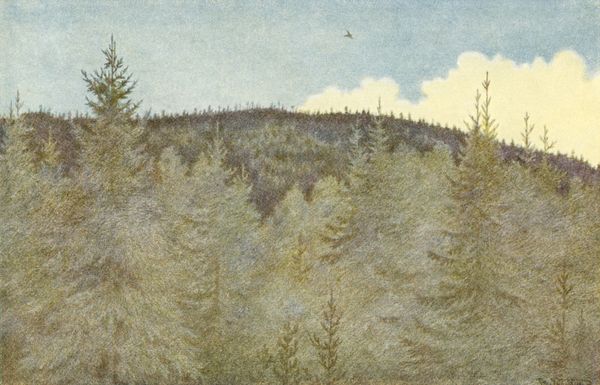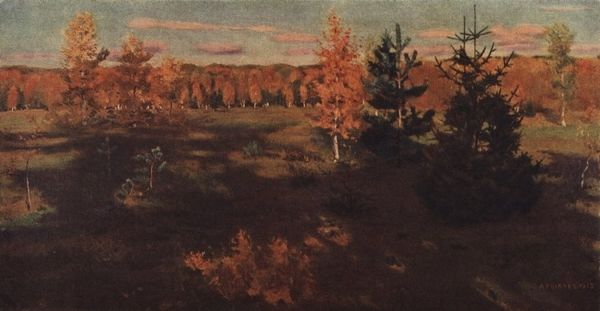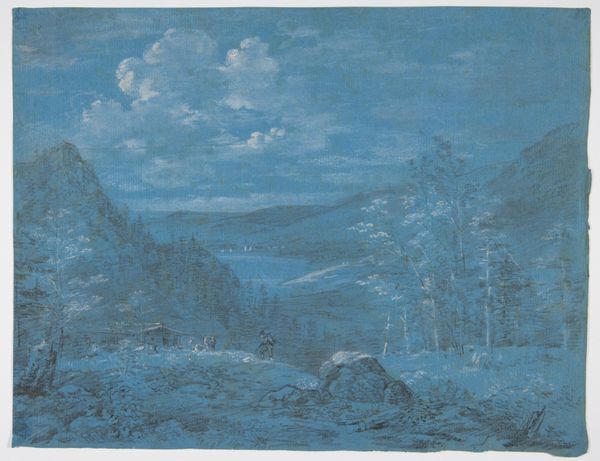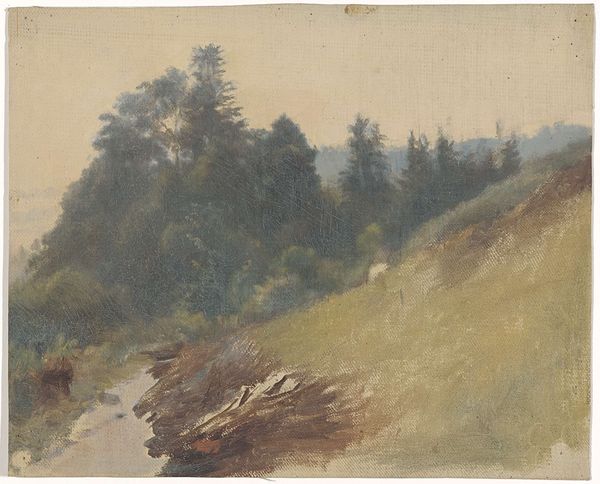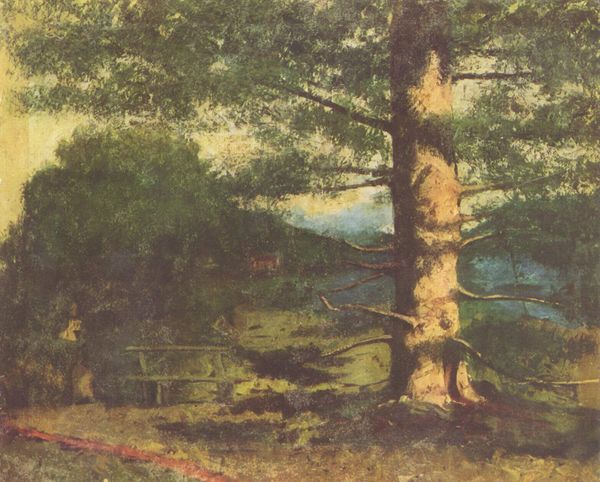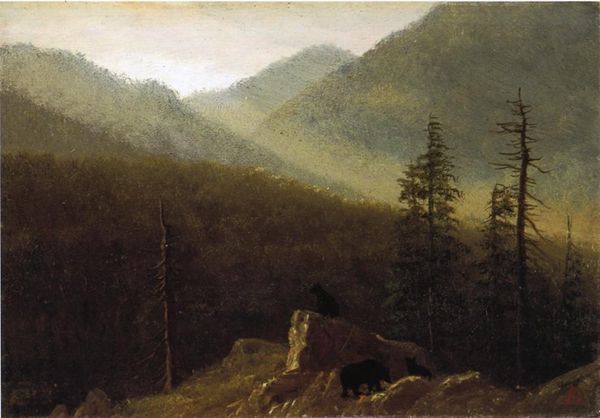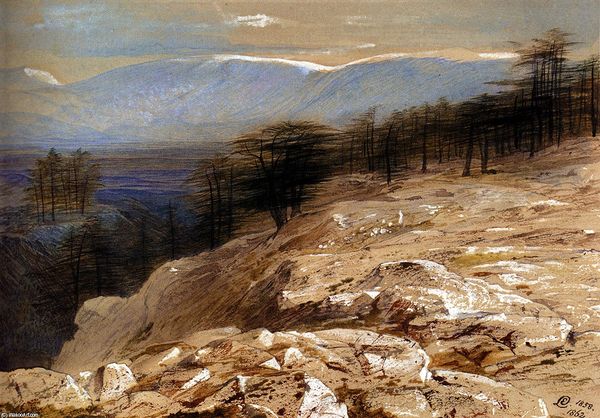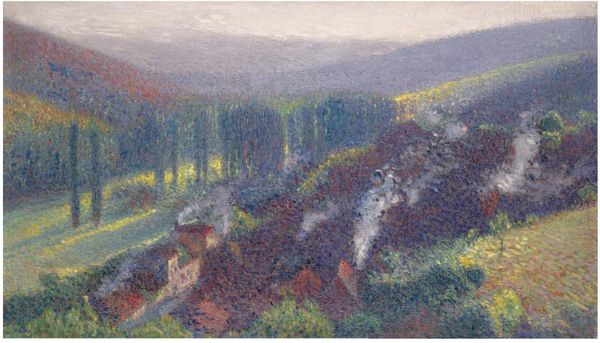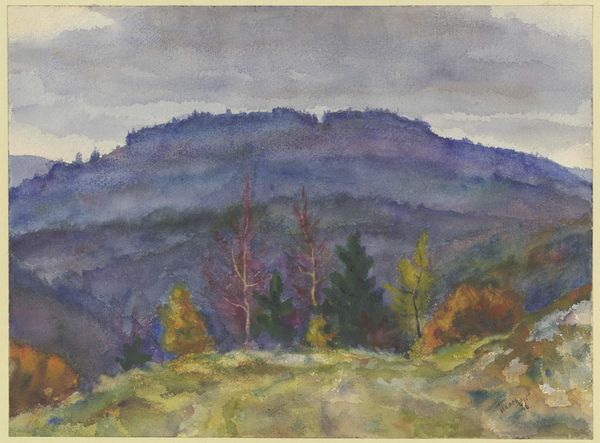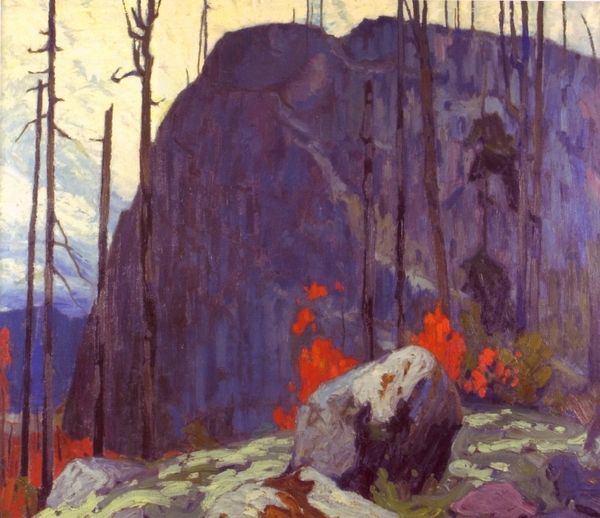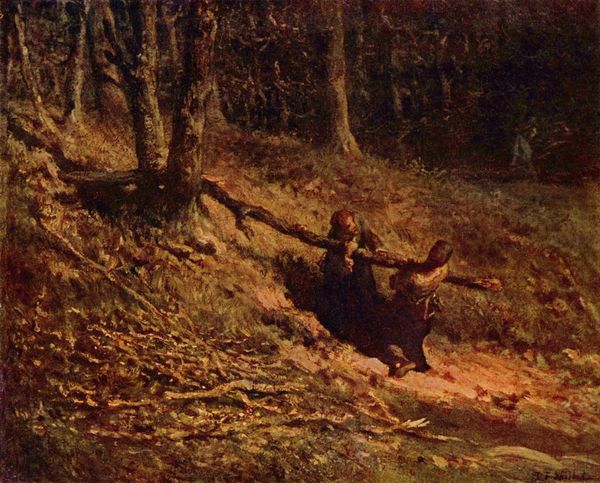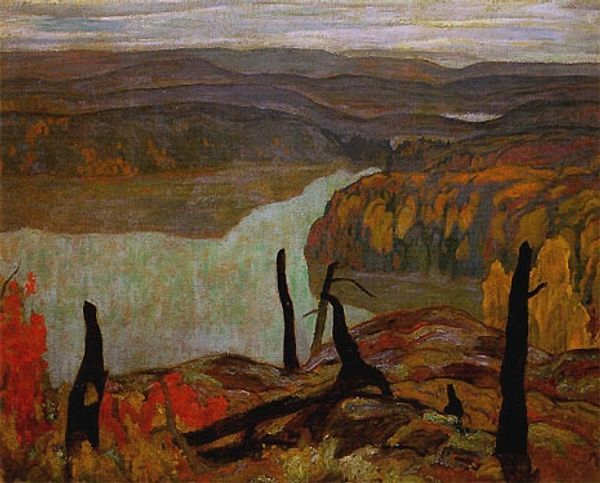
Copyright: Public domain
Editor: Here we have Theodor Kittelsen's "Askeladden og trollet (på flya)" from 1910. It seems to be an oil painting. There is a real sense of foreboding and drama created by the looming troll and the figure fleeing across the landscape. How do you interpret this work in terms of its historical and cultural context? Curator: This image is steeped in Norwegian folklore. Kittelsen often drew upon traditional tales, and here we see the intersection of nature and the supernatural. Consider how the troll, a creature of the wilderness, can be seen as a metaphor for untamed forces. In what ways does Kittelsen reflect anxieties about the encroachment of civilization upon nature? Editor: That’s interesting! I hadn't thought of the troll representing the power of nature itself. Is the fleeing figure, Askeladden, then representing humanity in conflict with it? Curator: Precisely. And consider the romantic era in which this was created. Artists were often exploring themes of national identity. Does the use of folklore serve to reinforce a specific cultural narrative? Also, note the dynamic contrast. One still like nature, the other in motion representing the future and/or modernity. What implications arise from this dichotomy? Editor: So, Kittelsen might be exploring deeper themes of cultural identity, change and conflict through this seemingly simple folklore illustration? I am also stuck on how the figure of the Troll and that of Askeladden both belong to the culture the image arises from, a culture of myths and oral storytelling. How are we to place that? Curator: Absolutely, and by looking at the artwork, not merely as an illustration, but as a cultural artefact, we begin to see it engage with larger discourses about power, identity, and the relationship between humanity and its environment. Also the relationship between its past traditions and future progression. Editor: I hadn't thought about how Kittelsen's choice of subject connects to those broader social and political ideas. I will definitely approach these artworks differently now. Curator: Art opens our minds when we situate its subject within the culture it arose from and its values and belief systems, and ask these pertinent questions.
Comments
No comments
Be the first to comment and join the conversation on the ultimate creative platform.
